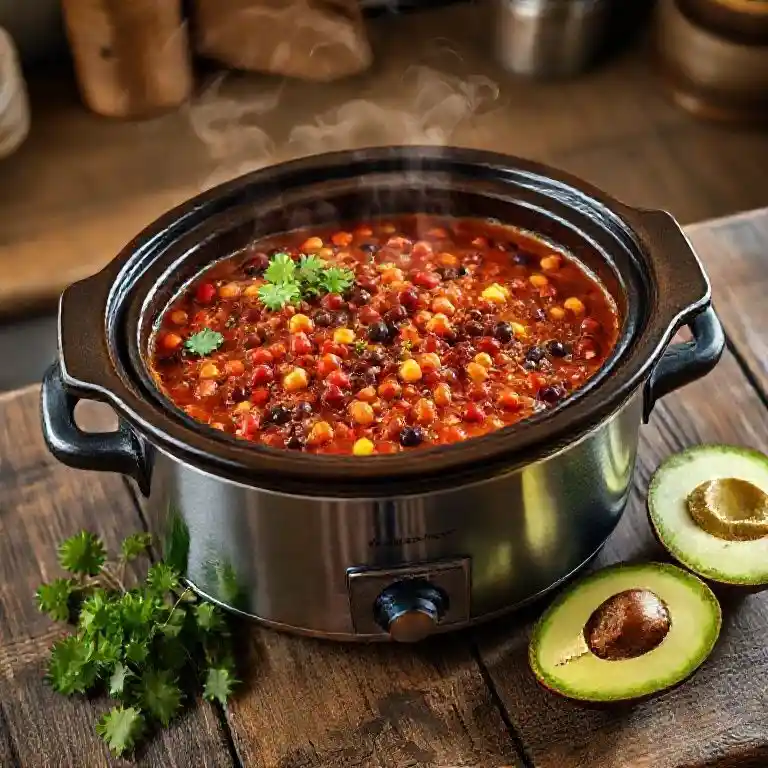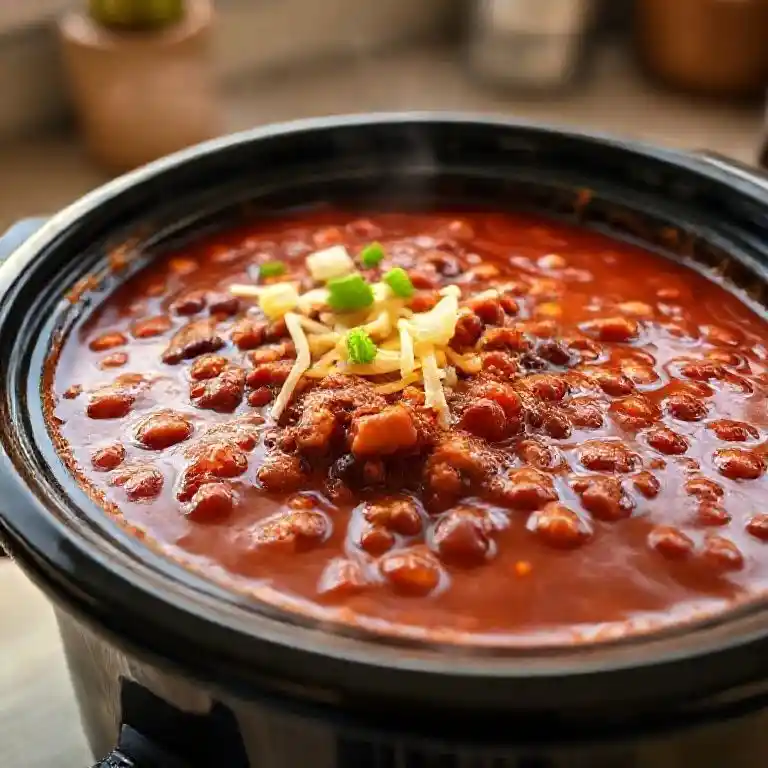Last Updated on October 9, 2025 by Sophy
If you’ve ever wondered whether gluten-free soy sauce can really make a difference in your cooking and your health, you’re not alone. Many people who follow a gluten-free lifestyle feel lost when it comes to condiments especially soy sauce, a staple in Asian-inspired dishes. The truth is, not all soy sauces are safe for people with gluten intolerance or celiac disease, and making the wrong choice could cause discomfort or health issues.
This comprehensive guide will walk you through everything you need to know about gluten-free soy sauce, from ingredients to brands, cooking tips to shopping strategies. Whether you’re new to gluten-free living or looking to expand your culinary horizons, we’ve got you covered.
Join Our Newsletter for More Healthy Cooking Tips
JUMP TO

Gluten Free Soy Sauce Cooking Ideas
- Total Time: 15 minutes
- Yield: 2 servings
- Diet: Gluten Free
Description
Gluten free soy sauce makes meals healthier and tastier. Discover top brands, benefits, and cooking tips in this ultimate guide.
Ingredients
- 2 tbsp gluten free soy sauce
- 1 tbsp sesame oil
- 1 garlic clove, minced
- 1 cup mixed vegetables
Instructions
- Heat sesame oil in a pan.
- Add garlic and sauté until fragrant.
- Stir in vegetables and cook until tender.
- Add gluten free soy sauce and toss well.
- Prep Time: 5 minutes
- Cook Time: 10 minutes
- Cuisine: Asian
What Is Gluten-Free Soy Sauce? Ingredients and How It Differs from Regular Soy Sauce
What Makes Gluten Free Soy Sauce?
Gluten-free soy sauce is made without wheat, using ingredients like soybeans, rice, salt, and water. It offers the same umami flavor as regular soy sauce but is safe for people with celiac disease or gluten sensitivity.
Gluten-free soy sauce achieves its rich, umami flavor through alternative fermentation processes and ingredient combinations. Many use rice instead of wheat, while others rely solely on soybeans and salt. The result is a condiment that delivers the same satisfying depth of flavor without compromising your dietary needs.
don’t miss our collection of creative dessert recipes
Traditional Soy Sauce vs Gluten-Free Soy Sauce
The main difference between traditional and gluten-free soy sauce comes down to the grain used in fermentation:
Traditional Soy Sauce:
- Contains soybeans, wheat, salt, and water
- Wheat provides sugars for fermentation
- Creates a slightly sweeter, more complex flavor profile
- Contains gluten proteins that can trigger reactions
Gluten-Free Soy Sauce:
- Uses soybeans, rice (or no grain at all), salt, and water
- Rice or alternative methods provide fermentation sugars
- Maintains umami richness with a slightly different flavor note
- Gluten-free: This is the most common and direct way to say it. It’s concise and widely understood.
The taste difference is often minimal – many people can’t distinguish between high-quality gluten-free and traditional soy sauces in cooking applications.

Why Choose Gluten Free Soy Sauce?
Health Benefits of Gluten Free Soy Sauce
Beyond being safe for those who must avoid gluten, gluten-free soy sauce offers several potential benefits:
Digestive Comfort: Even people without diagnosed gluten issues sometimes find they feel better when reducing gluten intake. Switching to gluten-free soy sauce is an easy way to eliminate one source.
Cleaner Ingredients: Many gluten-free soy sauces focus on simple, natural ingredients without unnecessary additives or preservatives.
Versatility: You can cook for mixed groups without worry – gluten-free soy sauce works perfectly for everyone at the table.
Peace of Mind: No more label-reading stress when you know your go-to soy sauce is safe.
Who Should Avoid Gluten in Soy Sauce?
Several groups benefit from choosing wheat-free soy sauce:
People with Celiac Disease: This autoimmune condition requires strict gluten avoidance. Even small amounts of gluten from soy sauce can cause intestinal damage and symptoms.
Those with Non-Celiac Gluten Sensitivity: These individuals experience symptoms like bloating, headaches, or fatigue when consuming gluten, even without having celiac disease.
Parents of Children with Gluten Issues: Kids often love Asian flavors, and having safe condiments makes family meals easier.
Anyone Following a Gluten-Free Diet: Whether for health reasons, weight management, or personal preference, gluten-free soy sauce supports your dietary goals. Don’t miss our guide to gluten free zucchini bread
Gluten-Free Soy Sauce Ingredients: What to Look For (and Avoid)
The main ingredients in gluten-free soy sauce are soybeans, rice, salt, and water. Avoid products listing wheat, barley, or malt extract. Certified brands often highlight “rice-based” fermentation on their labels.
Common Ingredients in Regular Soy Sauce
Traditional soy sauce typically contains four basic ingredients:
- Soybeans (usually whole or defatted)
- Wheat (provides fermentable sugars)
- Salt (for preservation and flavor)
- Water (for the fermentation process)
Some commercial varieties may include additional ingredients like corn syrup, caramel color, or preservatives.
Key Ingredients in Gluten Free Soy Sauce
Gluten-free alternatives replace wheat with other ingredients:
Rice: Many gluten-free soy sauces use rice instead of wheat. Rice provides the necessary sugars for fermentation while keeping the product celiac-friendly.
Soybeans: Still the star ingredient, providing the protein base and umami flavor.
Salt: Essential for the fermentation process and flavor development.
Water: Used throughout production and fermentation.
Naturally Brewed Process: Look for products that mention natural brewing, as this traditional method often produces superior flavor compared to chemically processed alternatives.
Some specialty varieties might include additional ingredients like mushroom extract for enhanced umami or different types of salt for unique flavor profiles.
Best Certified Gluten-Free Soy Sauce Brands in 2025
Is Kikkoman Soy Sauce Gluten-Free?
This is one of the most frequently asked questions about gluten free soy sauce. The answer is: it depends on which Kikkoman product you choose.
Regular Kikkoman Soy Sauce: Contains wheat and is NOT gluten-free.
Kikkoman Tamari: This is Kikkoman’s gluten-free option. Made without wheat, their tamari is certified gluten-free and widely available. It has a rich, slightly thicker consistency than regular soy sauce with a deep, complex flavor.
Always check the label, as formulations can change. Look for the “gluten-free” certification on the bottle to be sure.
Other Top Gluten Free Soy Sauce Brands
San-J Tamari is a highly popular choice for a gluten free soy sauce alternative. It’s naturally brewed, and you can find it in both regular and reduced-sodium versions, making it a favorite among those who cook gluten-free meals.
La Choy Soy Sauce: Offers a gluten-free version that’s widely available in grocery stores. It’s typically more affordable than specialty brands.
Coconut Secret Coconut Aminos: Technically not soy sauce, but this soy-free, gluten-free alternative has gained popularity. Made from coconut tree sap, it offers a slightly sweeter flavor profile.
Eden Foods Tamari: An organic option that appeals to health-conscious consumers. It’s traditionally brewed and contains no additives.
Wan Ja Shan Tamari: Another well-regarded brand offering both organic and conventional gluten-free options.
Always look for the “Certified Gluten-Free” label to ensure your soy sauce meets safety standards.

Alternatives to Gluten Free Soy Sauce
Coconut Aminos as a Soy Sauce Alternative
Coconut aminos have become increasingly popular as both a soy-free and gluten-free alternative. Combining the sap of coconut trees with sea salt, this condiment provides:
Benefits:
- Naturally gluten-free and soy-free
- Lower sodium than traditional soy sauce
- Slightly sweet flavor that works well in many dishes
- Paleo and Whole30 compliant
Considerations:
- Different flavor profile – sweeter and less umami-rich
- More expensive than traditional soy sauce
- May require recipe adjustments due to flavor differences
Best Uses: Coconut aminos work particularly well in marinades, salad dressings, and dishes where you want a lighter, less intense flavor.
Tamari vs Gluten-Free Soy Sauce
While tamari is technically a type of gluten free soy sauce, there are some distinctions worth noting:
Tamari:
- Originally a byproduct of miso production
- Traditionally made without wheat
- Thicker, richer flavor than regular soy sauce
- Higher concentration of soybeans
- Often considered more premium
Gluten-Free Soy Sauce (rice-based):
- Specifically formulated to replace wheat with rice
- May have a flavor closer to traditional soy sauce
- Often more affordable than tamari
- Wider variety of brands and options
Both are excellent choices – your preference may come down to taste, price, and availability in your area.
The Best Ways to Cook with Gluten-Free Soy Sauce
Cooking Tips for Stir-Fries, Marinades, and Dips
Stir-Fries: Use gluten-free soy sauce just as you would regular soy sauce. Add it toward the end of cooking to preserve flavor and prevent over-salting. Start with 2-3 tablespoons for a family-sized stir-fry and adjust to taste.
Marinades: Gluten-free soy sauce makes an excellent marinade base. Mix in garlic, ginger, sesame oil, and a bit of honey or brown sugar. Let your protein marinate for 30 minutes to 4 hours, based on the type of cut.
Dipping Sauces: Mix gluten-free soy sauce with rice vinegar, sesame oil, and chili flakes for a simple dumpling dip. To make a spicy fusion sauce for sushi or tempura, mix the ingredient with mayonnaise and sriracha.
Pro Tips:
- Taste as you go – some gluten-free versions may be saltier than others
- For best quality, store open bottles in the refrigerator.
- Don’t add soy sauce too early in slow-cooking applications, as it can become overpowering
Best Dishes That Pair with Gluten-Free Soy Sauce
Asian-Inspired Dishes:
- Beef and broccoli stir-fry
- Chicken teriyaki (use gluten-free ingredients throughout)
- Vegetable fried rice
- Pork and vegetable dumplings
Fusion Creations:
- Soy-glazed salmon with roasted vegetables
- Asian-style coleslaw with soy-sesame dressing
- Mushroom and soy sauce pasta (use gluten-free noodles)
- Grilled chicken with soy-ginger marinade
Unexpected Applications:
- Add depth to mushroom risotto
- Enhance beef stew or pot roast
- Create unique salad dressings
- Boost umami in vegetarian dishes
Buying Guide for Gluten Free Soy Sauce
What to Check on Labels When Shopping
Look for Clear Labeling: Products that are truly gluten-free will prominently display “gluten-free” on the label. Don’t assume – always check.
Ingredient Lists: Avoid products containing:
- Wheat
- Barley
- Rye
- Malt (usually from barley)
- Modified food starch (unless specified as corn-based)
Certification Symbols: Look for third-party gluten-free certifications from organizations like:
- Gluten-Free Certification Organization (GFCO)
- NSF Gluten-Free
- Certified Gluten-Free by GFCP
Manufacturing Information: Some products may be made in facilities that also process wheat. If you’re extremely sensitive, look for products made in dedicated gluten-free facilities.
Sodium Content: If you’re watching your sodium intake, compare levels between brands. Some gluten-free options offer reduced-sodium versions.
For more inspiration, check out our gluten free vegan pancakes
Where to Buy Gluten-Free Soy Sauce
Grocery Stores: Most major supermarkets now carry at least one gluten-free soy sauce option, usually in the international/Asian foods aisle or the health food section.
Health Food Stores: Natural food stores typically offer a wider selection of gluten-free and specialty soy sauces.
Asian Markets: Many Asian grocery stores carry tamari and other gluten-free options, often at better prices than mainstream stores.
Online Retailers: Amazon, Thrive Market, and other online platforms offer extensive selections and often better pricing, especially for bulk purchases.
Warehouse Stores: Costco and Sam’s Club sometimes carry large bottles of gluten-free soy sauce at competitive prices.
FAQs About Gluten Free Soy Sauce
What Soy Sauce is Gluten-Free?
Several types of soy sauce are naturally or specifically made to be gluten-free:
Tamari: Traditional Japanese soy sauce made without wheat
Rice-based soy sauce: Uses rice instead of wheat in production
Certified gluten-free soy sauce: Regular soy sauce reformulated without gluten-containing ingredients
Always check labels, as not all tamari or “soy sauce” products are guaranteed gluten-free.
Is Kikkoman Soy Sauce Gluten-Free?
The original Kikkoman soy sauce is not a gluten-free option because it is made with wheat. Kikkoman’s tamari soy sauce, on the other hand, is certified as gluten-free. Look specifically for “Kikkoman Tamari” with gluten-free labeling.
What is a Gluten-Free Alternative to Soy Sauce?
Besides gluten-free soy sauce and tamari, several alternatives exist:
Coconut aminos: Sweet, soy-free option
Liquid aminos: Made from soybeans but processed differently
Mushroom-based sauces: Provide umami without soy or gluten
Fish sauce: Different flavor profile but adds umami depth
Homemade alternatives: Combine ingredients like mushroom broth, salt, and vinegar
Can I Eat Soy Sauce if I’m Gluten-Free?
You can enjoy soy sauce on a gluten-free diet, but you must choose certified gluten-free varieties. Regular soy sauce contains wheat and will trigger symptoms in people with celiac disease or gluten sensitivity. Always read labels carefully and look for gluten-free certification when shopping.
Is soy sauce gluten-free?
Regular soy sauce contains wheat, so it’s not gluten-free. Choose certified gluten-free options like tamari or rice-based soy sauces
How do I know if soy sauce is certified gluten-free?
Check for labels from GFCO, NSF, or GFCP on the bottle.
What are the best gluten-free soy sauce brands?
Kikkoman Tamari, San-J, and Coconut Secret are top-rated, all certified gluten-free
Conclusion
Final Thoughts on Gluten-Free Soy Sauce
Switching to gluten-free soy sauce doesn’t mean compromising on flavor or limiting your culinary adventures. Today’s market offers numerous high-quality options that deliver the same umami richness and versatility you expect from traditional soy sauce. Whether you choose tamari, rice-based alternatives, or explore options like coconut aminos, you’ll find that gluten-free doesn’t mean flavor-free.
The key is experimenting with different brands and types to find your personal favorites. Some people prefer the robust flavor of tamari, while others gravitate toward the lighter taste of rice-based alternatives. Don’t be afraid to try several options – your taste buds (and your health) will thank you.
Encouragement for Healthier Choices
Making the switch to gluten-free soy sauce is more than just a dietary change – it’s an investment in your long-term health and peace of mind. Every small step toward better ingredient awareness contributes to a healthier lifestyle overall.
Remember that living gluten-free doesn’t mean living without flavor. With the right condiments in your pantry, you can continue to enjoy all your favorite dishes while supporting your health goals. The growing availability and improving quality of gluten-free products make it easier than ever to maintain a satisfying, delicious diet.
Ready to make the switch to gluten-free soy sauce? Start your journey today by picking up a bottle of certified gluten-free tamari or soy sauce from your local grocery store. Your taste buds – and your digestive system – will appreciate the difference. Don’t let gluten concerns hold you back from enjoying amazing Asian-inspired flavors in your home cooking!
Have you tried gluten-free soy sauce? Share your favorite brands and recipe ideas in the comments below – your fellow gluten-free cooks would love to hear your recommendations!






2 thoughts on “Gluten-Free Soy Sauce”